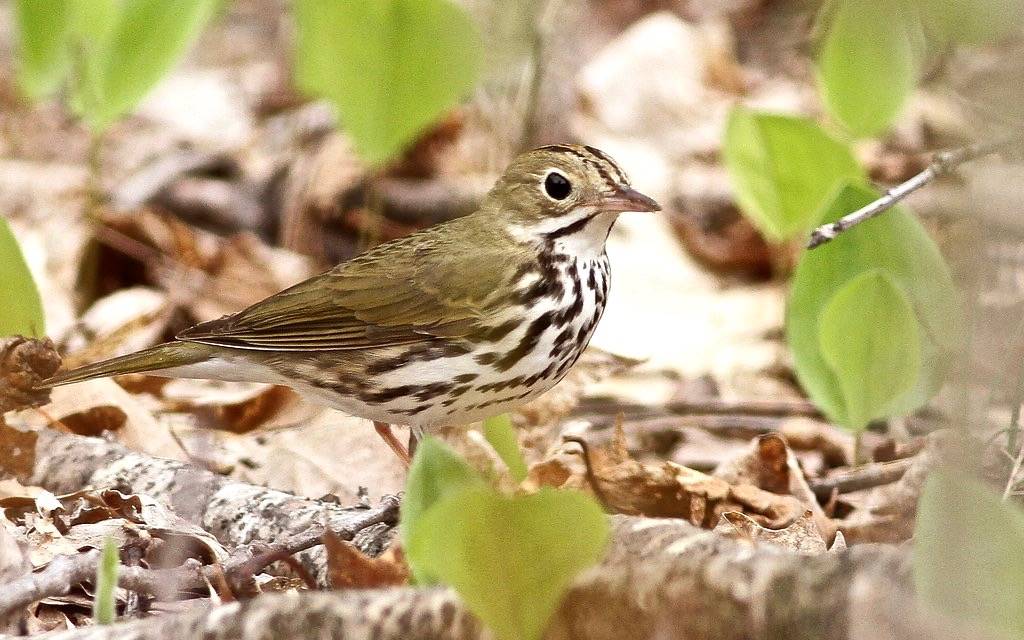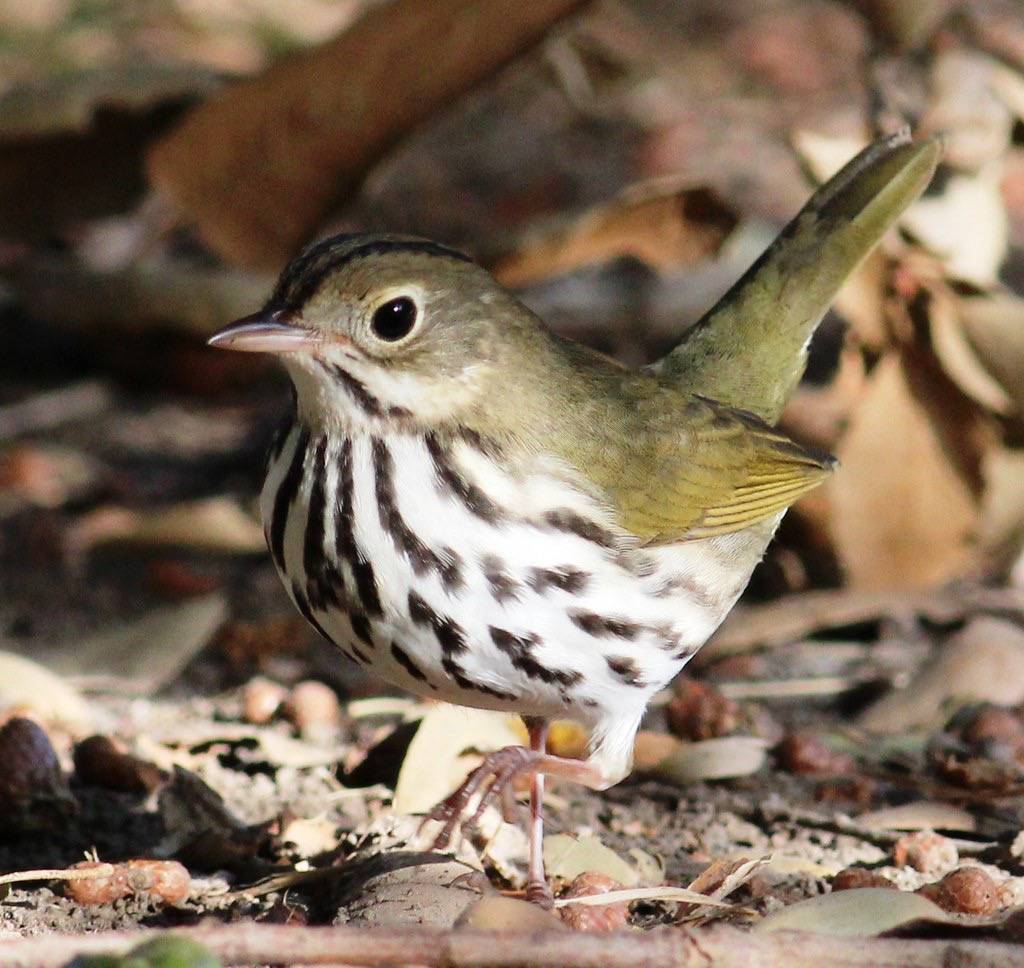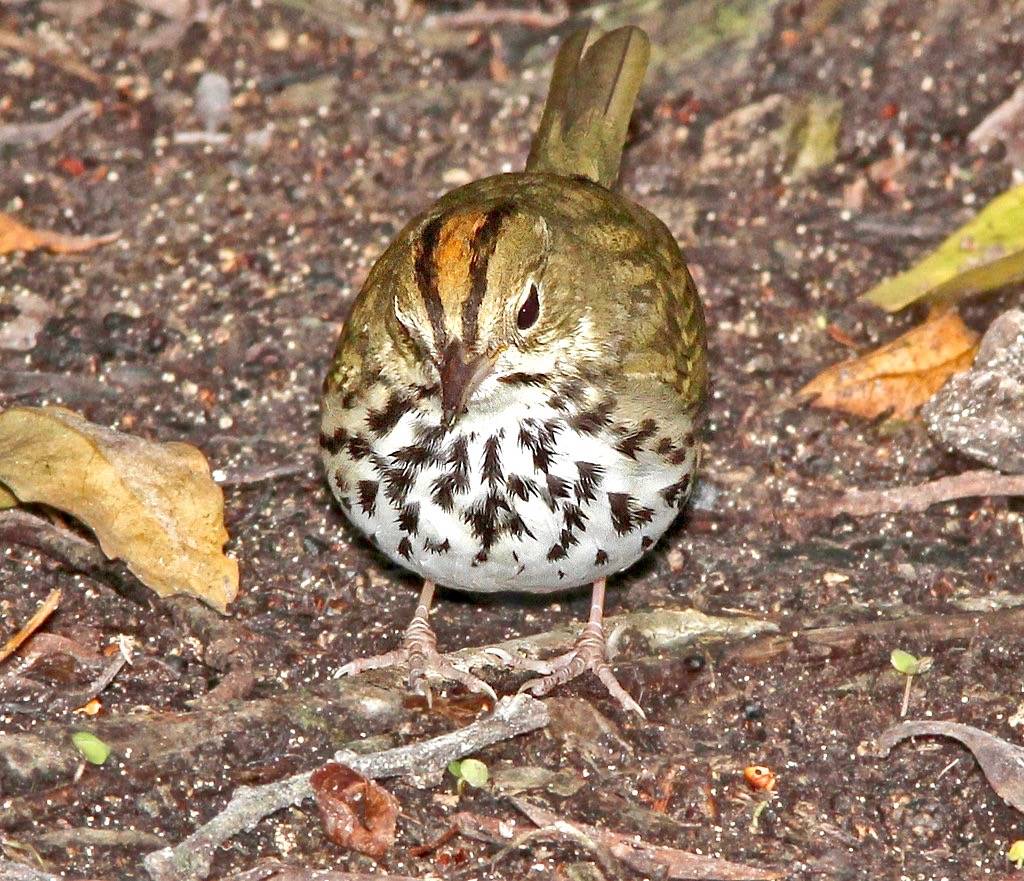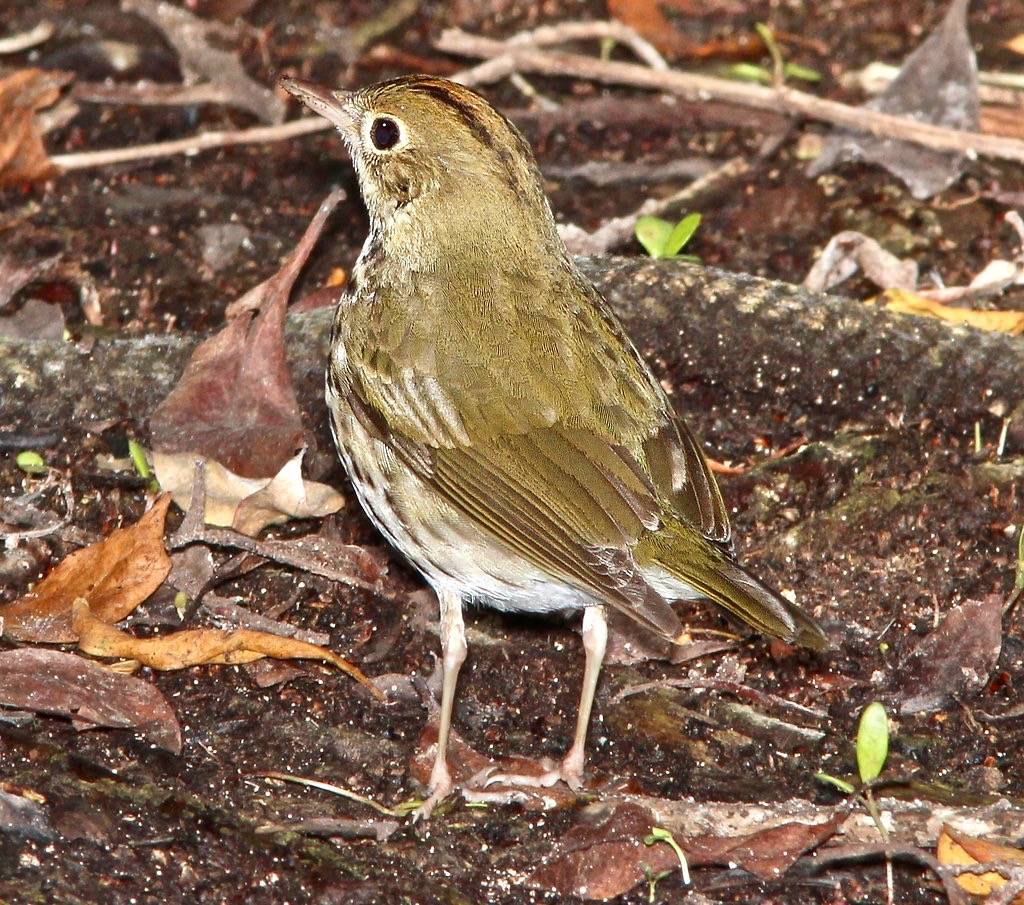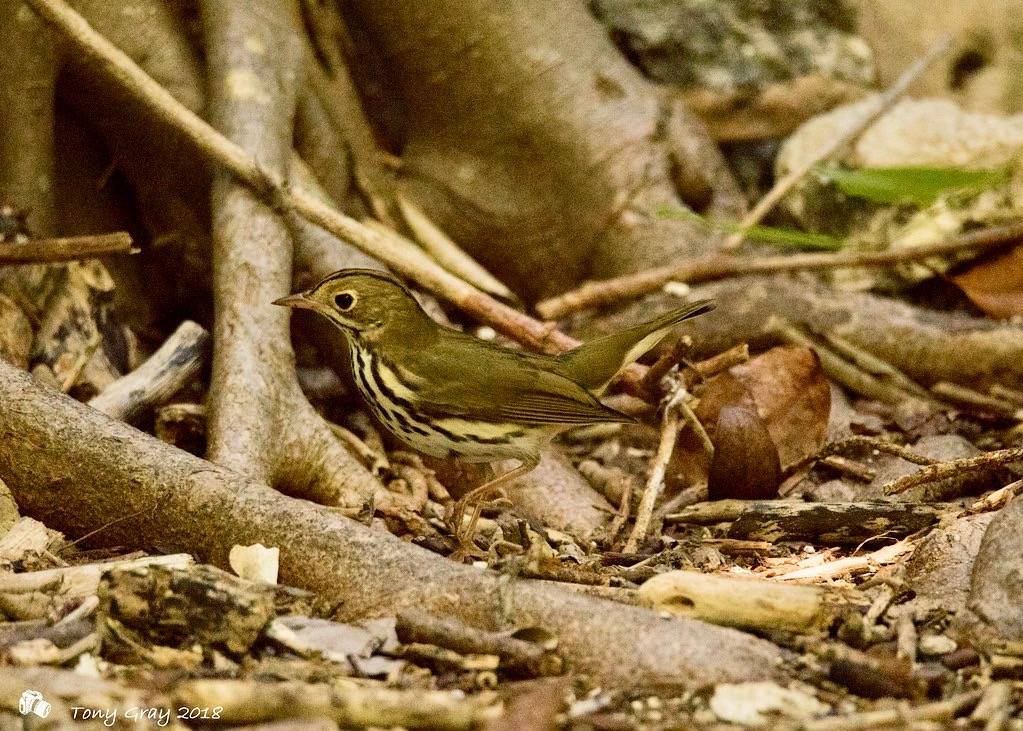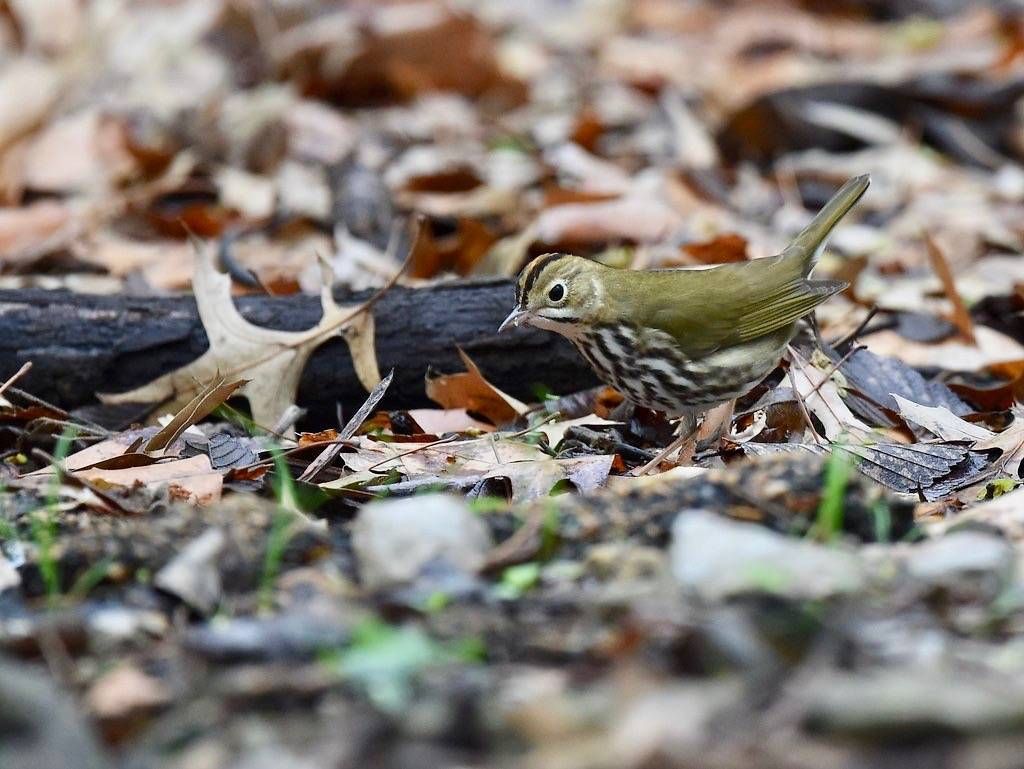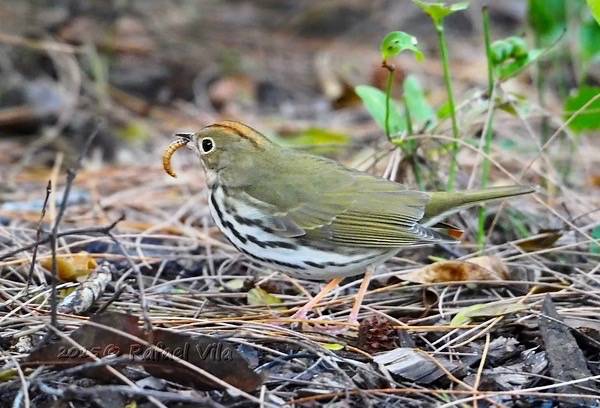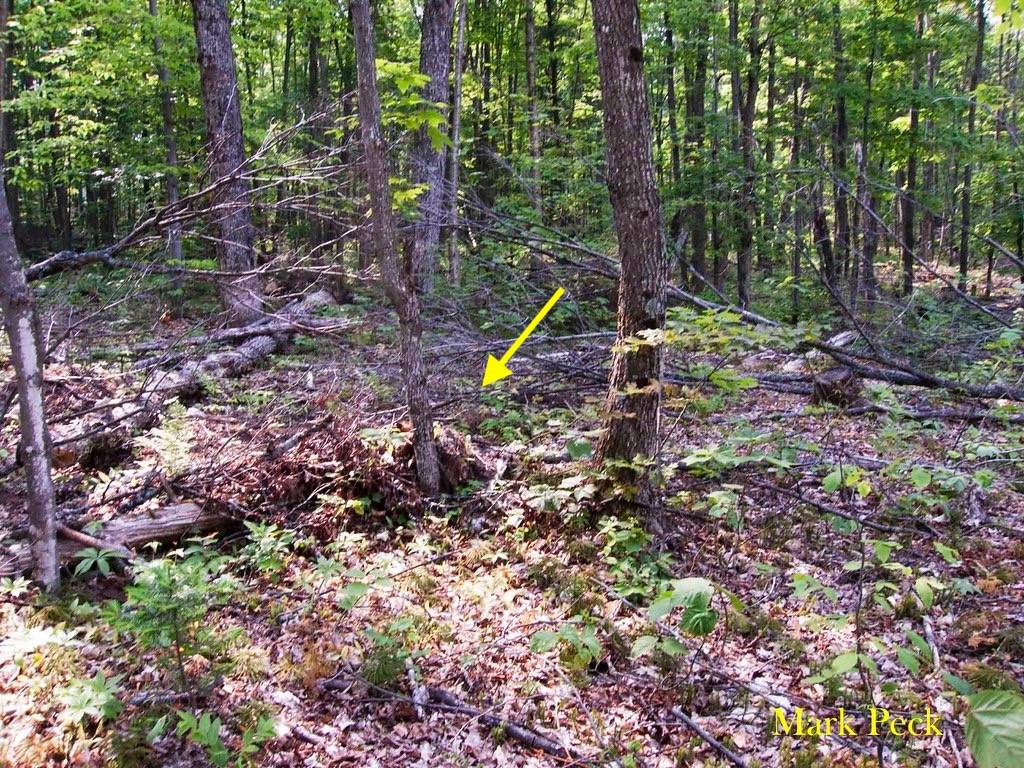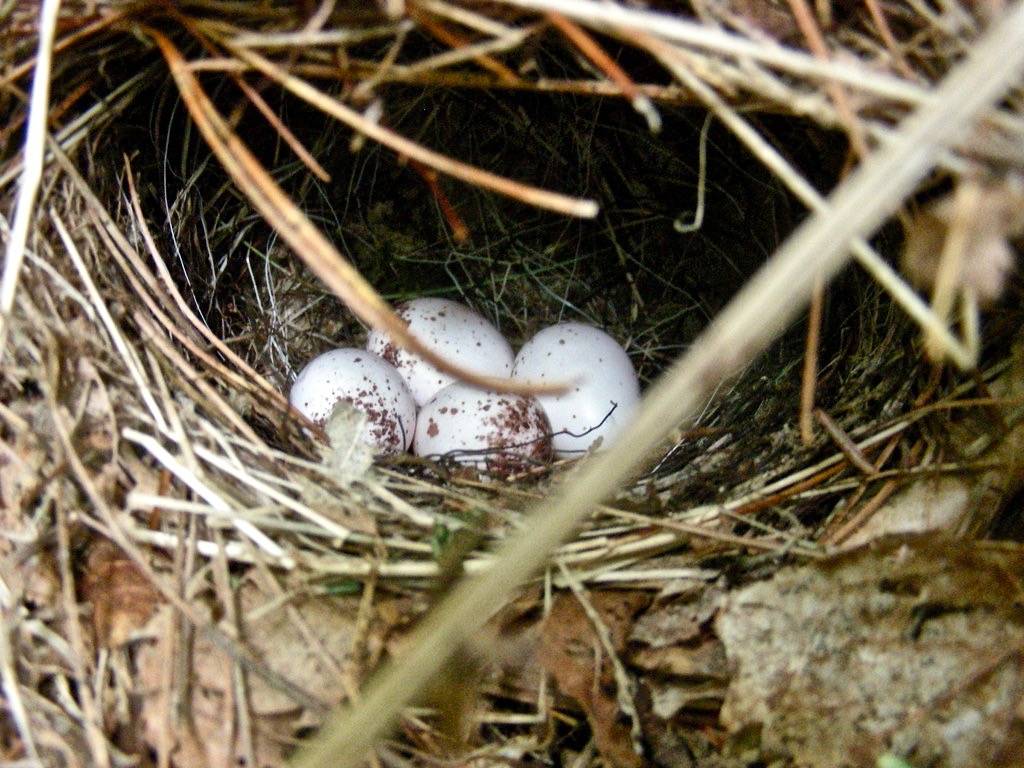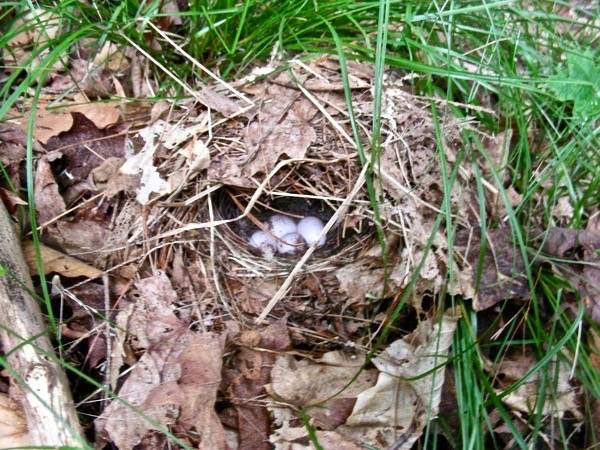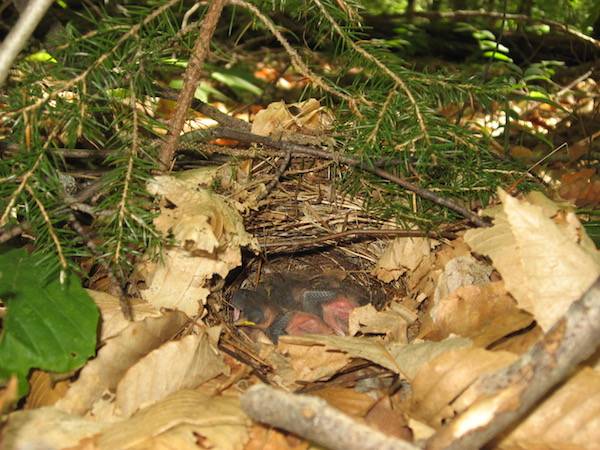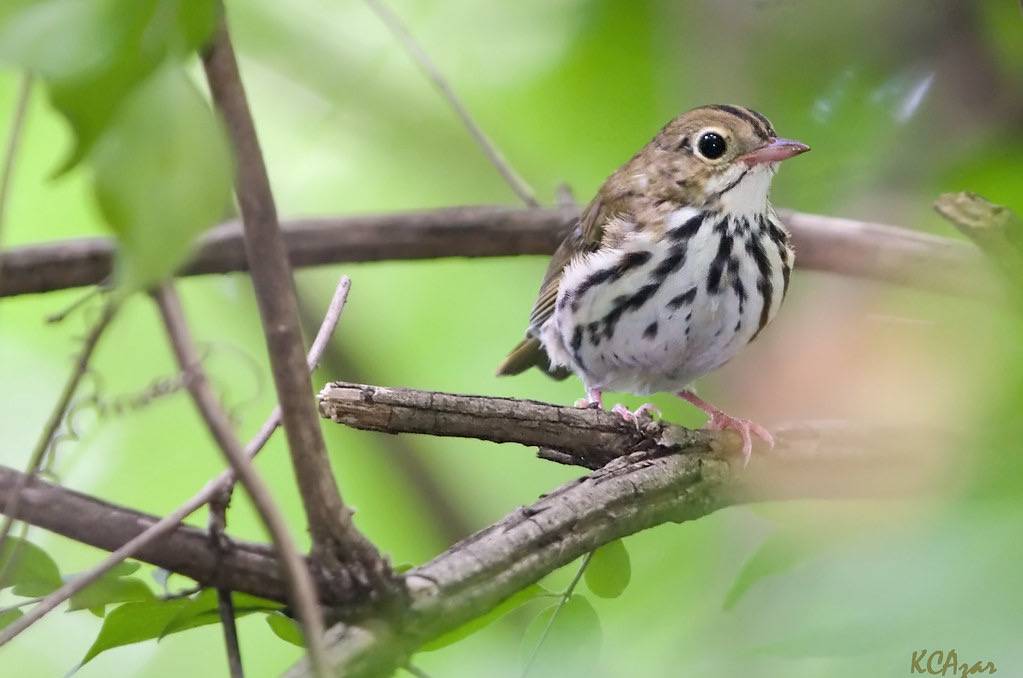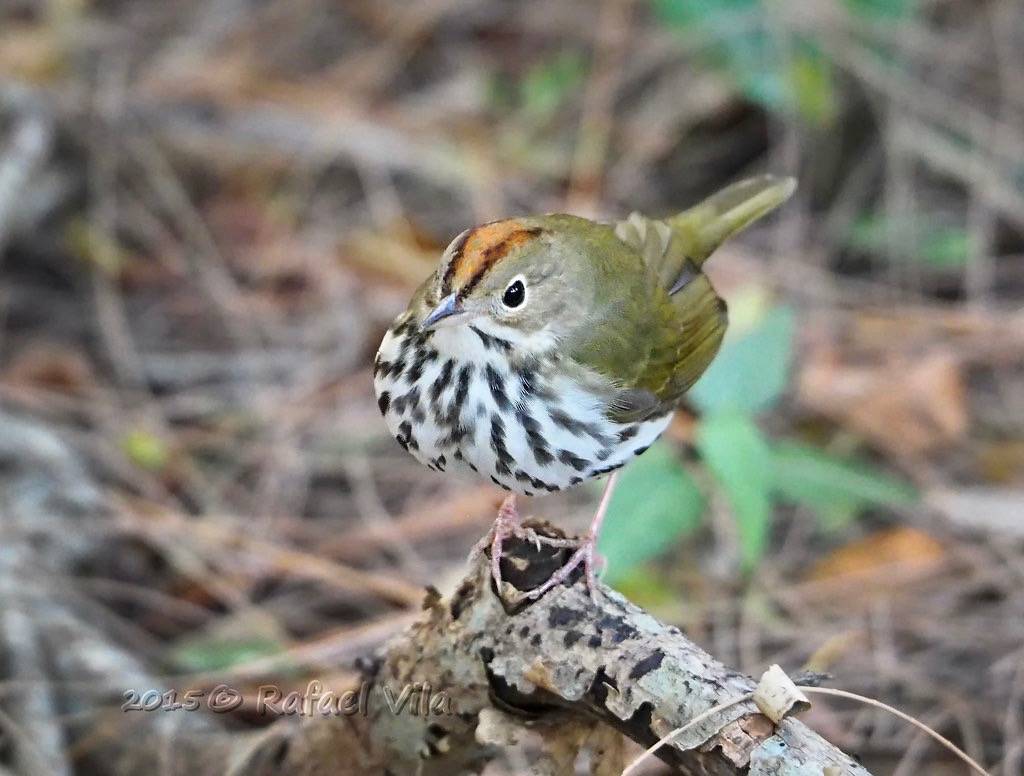Ovenbird
Any Ovenbird seen at Salter Grove would be a migrant passing through. Upland, Pond and Marsh Trails during spring and fall migration would be likely areas to see this visiting species foraging for invertebrates in leaf litter, or in the grassy areas near water
Unlike most of the other wood warblers, the Ovenbird is monomorphic. It spends most of its time on the forest floor foraging in leaf litter for invertebrates like insects, snails, spiders, and worms. Despite the bold black markings on its breast, it is actually difficult to see as it ambles along the forest floor. it could be mistaken for the somewhat larger Hermit Thrush which has a similar plumage pattern and forages in the same manner, but the Hermit Thrush has a reddish tail.
The Ovenbird's common name refers to the dome-shaped nest that it builds right on the ground in the mature deciduous or mixed broadleaf-conifer forests of eastern North America. A ground-nesting habit requires dealing with predators like snakes, squirrels and chipmunks. Only the female incubates the eggs and when predators approach, she performs a display that simulates a crippled bird to lure predators away from the nest area. Like many other warbler species, the female Ovenbird is duped into raising the young of the Brown-headed Cowbird, a brood parasite.
The Ovenbird breeds in eastern North America, and winters in Florida, many Caribbean islands, Central America, and northern Venezuela. Studies indicate that mature forests of 250 to 2,000 acres are inadequate to sustain Ovenbird populations unless they are surrounded by even larger tracts of mature forests. The small acreage and open canopy of the woodland present at Salter Grove would clearly not provide suitable nesting habitat for this warbler.

